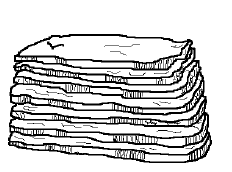Soil structure is the arrangement of the primary soil particles (sand, silt, and clay) and other soil materials into discrete aggregates . Classification is based upon – 1. Type (shape and arrangement of peds), 2. Class (size of peds) and 3. Grade (durability of peds). Peds • Peds consist of primary particles bound together by cementing agents like organic matter, clay, and hydrous oxides of iron and aluminum. • They are the structural units that have distinct boundaries and well-defined planes of weakness. • Based on shapes and arrangements of peds/ aggregates, soil structure is of 4 principal types: ...





